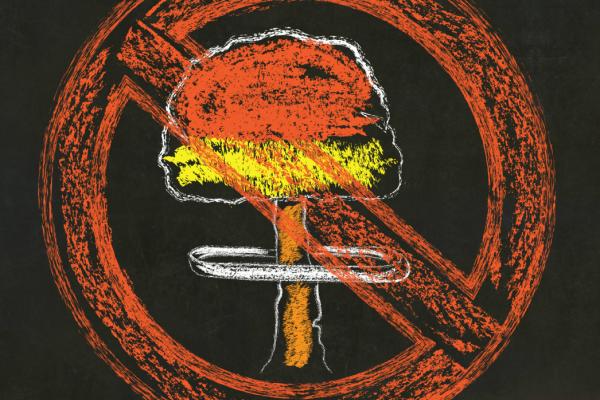IMAGINE IF YOU will a world in which the most destructive weapons were “conventional” explosives. These bombs, often with nicknames such as “Daisy Cutter” or “bunker buster” or even the “Mother of All Bombs,” have enormous power: The Vietnam-era Daisy Cutter, one of the largest conventional weapons ever used, was designed to flatten a forest into a helicopter landing zone with a blast equal to about 15,000 pounds of TNT.
Now imagine that someone says, “Those conventional bombs aren’t destructive enough. Let’s invent a weapon a million times more powerful, one that releases radiation that magnifies the killing effects for generations. And let’s make 16,000 of those weapons.”
A sane world would respond, “You’ve gotta be kidding.”
But in the real world, it’s no joke.
Today, 70 years after the attacks on Hiroshima and Nagasaki in 1945, the world has 16,400 nuclear weapons—93 percent of them in the arsenals of the U.S. and Russia. The first H-bomb had the force of around 10 million tons of TNT, more than a million times as powerful as the worst conventional weapons.
Read the Full Article

